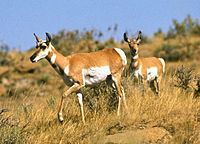Order Artiodactyla Infraorder PecoraFlower, 1883 | Phylum Chordata Suborder Ruminantia Scientific name Pecora | |
 | ||
Lifespan Cattle: 18 – 22 years, Sheep: 10 – 12 years Height Reindeer: 85 – 150 cm, Moose: 1.4 – 2.1 m Gestation period Cattle: 283 days, Sheep: 152 days Lower classifications Deer, Giraffe, Giraffidae, Bovinae, Musk deer | ||
Angela pecora on zan jo lena open winner ahca
The Pecora are an infraorder of even-toed hoofed mammals with ruminant digestion (Ruminantia, a clade within the Artiodactyla). Most members of Pecora have cranial appendages projecting from their frontal bones; only two extant genera lack them, Hydropotes and Moschus. The name “Pecora” comes from the Latin word pecus, which means “horned livestock”. Although most pecorans have cranial appendages, only some of these are properly called “horns”, and many scientists agree that these appendages did not arise from a common ancestor, but instead evolved independently on at least two occasions. Likewise, while Pecora as a group is supported by both molecular and morphological studies, morphological support for interrelationships between pecoran families is disputed.
Contents
- Angela pecora on zan jo lena open winner ahca
- Evolutionary history
- Taxonomy
- Anatomy
- Cranial Appendages
- Horns
- Antlers
- Ossicones
- Pronghorns
- References
Evolutionary history
The first fossil ruminants appeared in the mid-Eocene, and were small, likely omnivorous, forest-dwellers. Artiodactyls with cranial appendages first occur in the early Miocene. The appearance of the Pecora during the Miocene suggests that their rapid diversification may correspond to the climate change events of that epoch.
Taxonomy
Current attempts to determine the relationships among pecoran families (as well as all artiodactyls) rely on molecular studies, as little consensus exists in morphological studies. The different families within the Pecora are recognized as valid by different groups of scientists.and sources therein, pp. 4–5
Anatomy
The Pecora share characteristics with other Artiodactyls, including a four-chambered stomach, and a paraxonic foot, meaning that it supports weight on the third and fourth digits. Janis and Scott (1987) recognize several characteristics that distinguish Pecora from their sister taxon, Tragulina: an astragalus with parallel sides, a loss of the trapezium, and differences in parts of the skull such as the petrosal.
Cranial Appendages
The distinguishing features of most pecoran families are cranial appendages. Modern Pecora (with the exception of the Moschidae) have one of four types of cranial appendages: horns, antlers, ossicones, or pronghorns.
Horns
True horns have a bone core that is covered in a permanent sheath of keratin. They are indicative of Bovidae. Horns develop in the periosteum over the frontal bone, and can be curved or straight. Surface features on the keratin sheath (e.g., ridges or twists) are thought to be caused by differential rates of growth around the bone core.
Antlers
Antlers are bony structures that are shed and replaced each year in members of the family Cervidae. They grow from a permanent outgrowth of the frontal bone called the pedicle. Antlers can be branched, as in the White-tailed deer (Odocoileus virginianus), or palmate, as in the Moose (Alces alces).
Ossicones
Ossicones are permanent bone structures that fuse to the frontal or parietal bones during the lifetime of an animal. They are found only in the Giraffidae and closely related extinct clades, represented in modern animals by the Giraffe (Giraffa camelopardalis) and the Okapi (Okapia johnstoni).
Pronghorns
Pronghorns are similar to horns in that they have keratinous sheaths covering permanent bone cores; however, these sheaths are deciduous and can be shed like antlers. Very little is known about the development of pronghorns, but they are generally presumed to have evolved independently. The only extant animal with pronghorns is the Pronghorn antelope (Antilocapra americana).
